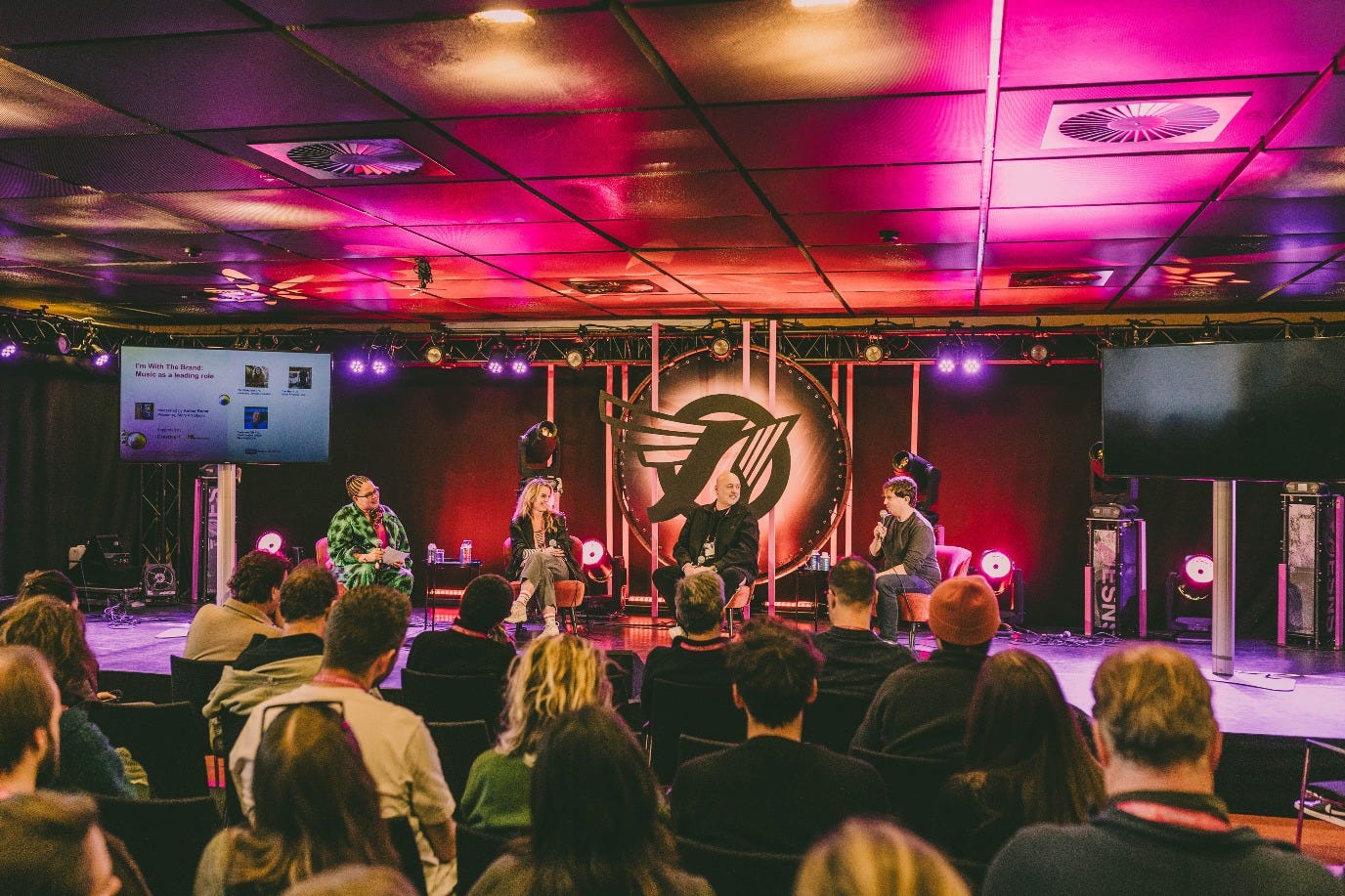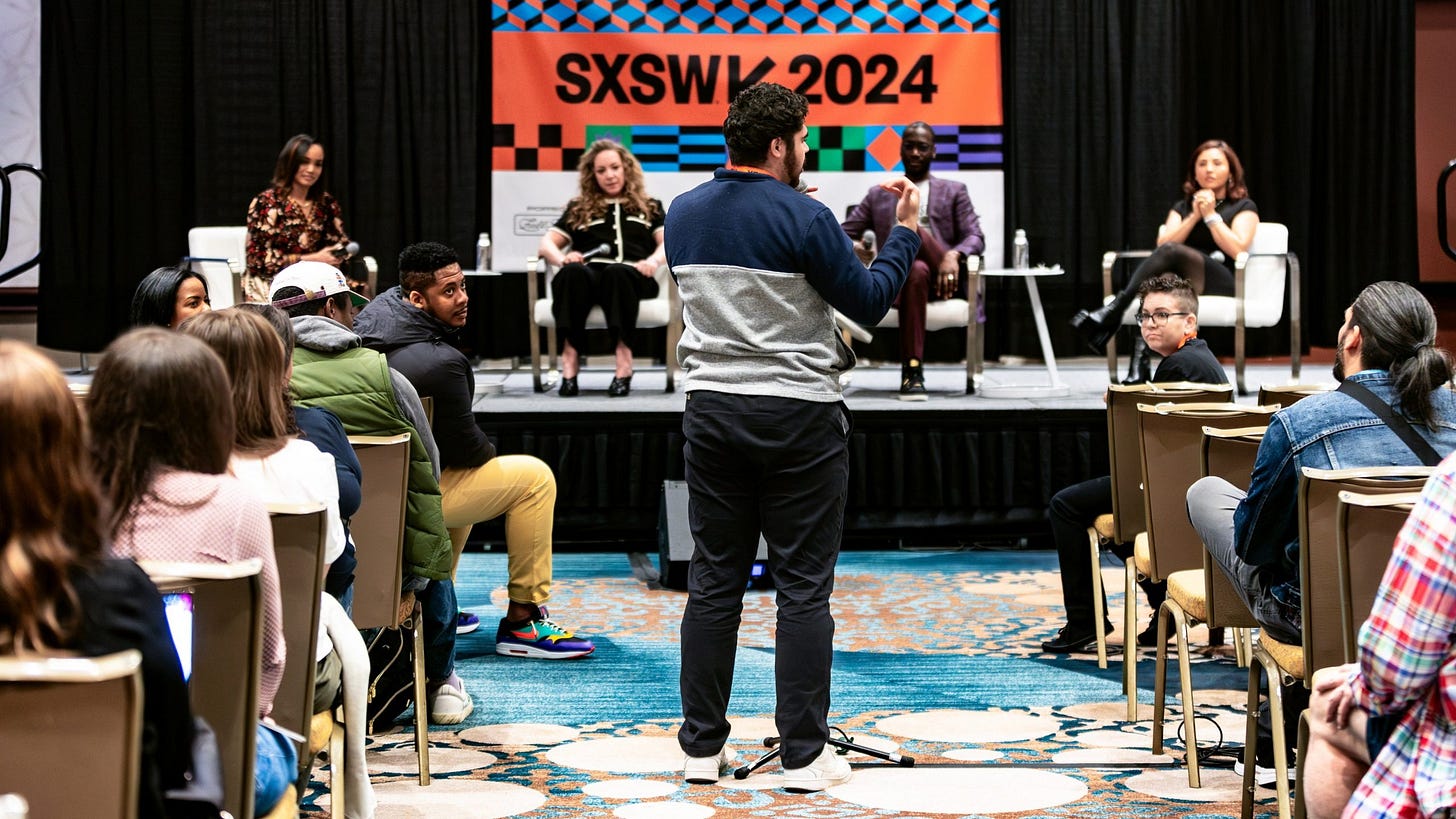By RPMS-member Jenn Clempner.
In 2024, the emergence of a UK based Music Industry and Music Education Conference (pioneered by Pathways Into Music: Connecting Music Industry and Music Education) marked a pivotal moment in the evolving dialogue between two historically adjacent but often disconnected spheres. Despite the interdependence between music education and the music industry, sustained collaboration in the UK has remained limited.
In the evolving field of popular music academia, we are witnessing more academics calling upon the support and resources of music industry charities and organisations in the name of music for social change, such as Vick Bain’s integral work on misogyny in the music business, and George Musgrave and Sally Anne Gross’s sector wide first in-depth studies on musicians mental health. But discussions about the intersections between industry and curriculum remain minimal.

The integration of ‘Artist Development’ into UK higher popular music curricula began only around three years ago, when universities and conservatoires began actively welcoming music industry professionals into their academic frameworks. This strategic shift signalled a recognition of the need to expose emerging musicians to the lived realities and professional expectations of the contemporary music business.
In the UK, Artist Development educators hold the responsibility of curating new, dynamic curricula, seeking meaningful engagement with industry practitioners who eat, sleep, and breathe the business, role model professional ethics (hard graft, inclusion, diversity, equity), and who are keen to engage with student musicians
Access to resources that enable the inclusion of guest lecturers from the industry must be acknowledged as a privilege within the current educational landscape. But if institutions are privileged enough, the model holds clear philanthropic and pedagogical benefits, not just to the students, but to the guest lecturers themselves.
Even highly regarded industry professionals grapple with fair pay and job insecurity in the arts sector. This reciprocal exchange allows for a reinvestment of industry knowledge and hard-earned experience back into the very ecosystem they’ve helped shape.
That said, finding individuals with specialist experience in publishing, artist management, PR, marketing, distribution - or as multifaceted session musician - who simultaneously possess an understanding of the pedagogical frameworks of higher education and can effectively engage undergraduate learners, is no easy task.
Industry-specific experience is relatively abundant, yet the ability to communicate expertise in an accessible (and pedagogically sound) manner to students aged 18–21 is a rarer skill set. This combination - whilst grasping the emotional dynamics of Gen Z students - is currently undervalued in both industry and academia.
This was confirmed by the Music Industry and Music Education (MIME) conference in November 2024: that this nuanced blend of identities is a rarity.
In contrast to the often meandering nature of panels at both industry and academic conferences, where discussions frequently veer off-topic, lean on personal narrative and lose sight of the wider discussion, the MIME Conference stood out as a model of thoughtful curation. It prioritised action-oriented dialogue over performative discourse.
Throughout the day, the conference not only raised but also engaged with a series of critical questions shaping the current music education and industry landscapes:
· To what extent is the prevailing DIY Artist narrative contributing to systemic issues within the ecosystem, including mental health challenges?
· Should students be actively encouraged to pursue professional engagements during their studies?
· What specific knowledge and competencies are essential for contemporary music makers navigating today’s cultural and commercial environments?
Crucially, MIME did not shy away from interrogating the limitations of artist development curriculums themselves. One of the central tensions is in trying to distil a sprawling, ever-changing, varied and complex industry into a rigid framework of academic modules. Which, arguably, is counter to the very nature of artistry.
Another critical concern was that students are in danger of premature emphasis on “the business” in their first year of studies. Students entering higher education at 18 or 19 are often still in the early stages of forming their artistic identities yet are implored to take off their ‘Artist Hat’ and don the ‘Business one’ immediately. This risks overwhelming them with information they do not yet have the maturity to fully comprehend. They also lack the context of the relevancy and importance of publishing splits, PPL registrations, or revenue streams of this within the context of their wider careers, and as a result become overwhelmed, disheartened and disengaged.
Ultimately, any meaningful exploration of the music business must address the broader sociological, economic, and political contexts of music-making. Discussions of music-making cannot be separated from the lived realities of those who produce it. As such, teaching music business becomes an exercise not merely in commercial literacy, but in critical inquiry, ethical reflection, and emotional intelligence. What we’re really teaching isn’t just “how to survive the industry,” but how to navigate the complexities of being a human-being in it.
This complexity was made tangible during participation in the “Popular Music in Higher Education” panel. While the conference commendably curated a range of voices across race, gender, age, and sexuality, the panel in question included only one woman among four participants - a composition that reflects broader patterns of representation in both higher education and the popular music industry. The gender imbalance was notable and is emblematic of a systemic issue.
A further distinction emerged between the professional backgrounds of the panellists. Among them, only the female brought direct experience within the music industry alongside academic expertise. The remainder were respected scholars in the field of popular music studies, without practical engagement in the professional domain. This is not a critique, but it does underscore the rarity of the hybrid professional - who bridges practice and pedagogy – within the field of popular music education. Theirs is a perspective is increasingly vital to a curriculum seeking to prepare students for real-world creative economies.

At the heart of this discussion lies a disquieting truth - one that emerged repeatedly throughout the MIME Conference: the music industry and music education are not nearly as distinct as they often perceive themselves to be.
On the contrary, both sectors are grappling with parallel challenges, many of which are documented yet insufficiently addressed:
· Women remain significantly underrepresented in positions of seniority across both fields (Bain, 2019; Bull et al., 2022).
· The prevalence of negative mental wellbeing among musicians and music students is increasing at an alarming rate (Musicians’ Union Census, 2023; BAPAM, 2024).
· Marginalised groups—particularly those identifying as disabled, transgender, non-binary, and LGBQ+—report disproportionately high levels of psychological distress within the music industry (Musicians’ Union Census, 2023; Bull et al., 2022).
· Pay within higher education has been steadily eroded by inflation, while students in popular music prepare to enter a professional domain already defined by economic precarity (Unison, 2023).
· Gender imbalances and the persistence of the motherhood penalty continue to define career trajectories across both education and industry (Bain, 2019).
· Both environments are marked by ongoing issues of sexism and harassment (Women and Equalities Committee, 2024; Bull, 2024; Bull & Shannon, 2024).
· Finally, both popular music as a practice and popular music education as a discipline remain under-researched and undervalued in broader academic and cultural discourses (Visser et al., 2021).
Despite these shared challenges, there persists a discernible and often uncomfortable divide between “industry types” and “academic types”. The contrast is not just professional; it’s cultural. We often operate in silos, viewing one another through lenses of suspicion or condescension. Whilst the two groups ostensibly work toward a common goal.
This divergence is more than a matter of professional culture; it represents a missed opportunity.
A closer alignment between music education and the music industry has the potential to catalyse transformative change, not only for students and early-career musicians, but for the institutions and economies that surround them. Each domain possesses distinct yet complementary knowledge. Their integration is not a matter of convenience but of necessity.
This reflection serves as a provocation—an invitation to imagine new forms of partnership. The question remains: Why are these two worlds not more aligned? The hope is that this will mark the beginning of a larger conversation, and that through both research and practice, the sector can begin to articulate, and actualise, the benefits of synchronisation.



